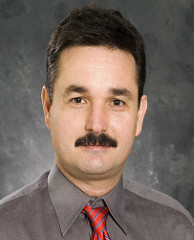Table of Contents
Definition / general | Epidemiology | Sites | Clinical features | Case reports | Treatment | Microscopic (histologic) description | Microscopic (histologic) images | Positive stains | Negative stains | Differential diagnosisCite this page: Luca DC. CHL nodular sclerosis. PathologyOutlines.com website. https://www.pathologyoutlines.com/topic/lymphomanonBnshl.html. Accessed April 25th, 2024.
Definition / general
- Subtype of classic Hodgkin lymphoma (CHL) characterized by collagen bands that surround at least one nodule and Hodgkin Reed-Sternberg (HRS) cells with lacunar type morphology (WHO Classification of Tumours of Haematopoietic and Lymphoid Tissues, 4th Edition, Lyon 2008)
Epidemiology
- 70% of classic Hodgkin lymphoma in Europe and USA
- More common in rich countries, highest risk in those with high socioeconomic status
- Similar incidence in males and females (the only classic Hodgkin lymphoma subtype without male predominance)
- Peaks at 15 - 34 years of age
Sites
- Cervical lymph nodes, mediastinum (80%), bulky disease (54%), spleen or lung (8 - 10), bone (5%), bone marrow (3%), liver (2%)
Clinical features
- Most present with stage II disease (2/3 have stage I or II disease)
- B symptoms: 40%
Case reports
- 4 year old girl with juvenile rheumatoid arthritis and EBV+ disease (Hum Pathol 2000;31:253)
- 21 year old woman with primary pulmonary disease (Arch Pathol Lab Med 2003;127:e49)
- 54 year old immunocompetent patient with primary intracerebral EBV+ disease (Am J Surg Pathol 1999;23:477)
Treatment
- Better overall prognosis than other types of classic Hodgkin lymphoma
- > 90% survival at 5 years for early stage disease
- Adverse prognostic indicator: massive mediastinal disease
Microscopic (histologic) description
- Nodular growth pattern with broad fibroblast poor birefringent collagen bands surrounding at least one nodule
- Usually confined within thickened lymphonodular capsule
- Highly variable numbers of HRS cells, small lymphocytes and other inflammatory cells; often numerous eosinophils, histiocytes and neutrophils; occasional foamy macrophages
- Mitoses uncommon
- HRS cells have more lobated nuclei, smaller lobes, less prominent nucleoli, more cytoplasm than other types of classic Hodgkin lymphoma
- Lacunar cells: formalin fixation artifact of delicate folded or multilobate nuclei surrounded by abundant pale cytoplasm often disrupted or retracted during cutting of sections with formalin fixation (but not B5 or Zenkers), leaving a lacune (empty hole); associated with necrosis and histiocytes (necrotizing granuloma-like)
- Syncytial variant: prominent aggregates of lacunar cells
- Grading by number of HRS cells (British National Lymphoma Investigation: 1 - scattered, 2 - aggregates in > 25% of nodules) and number of eosinophils (German HL Study Group: > 5%) is for research protocols but not for routine clinical purposes
Microscopic (histologic) images
Negative stains
Differential diagnosis
- Anaplastic large cell lymphoma (T cell markers+, CD15-, EMA+, CD45+), mediastinal large B cell lymphoma, metastatic carcinoma, melanoma, seminoma






